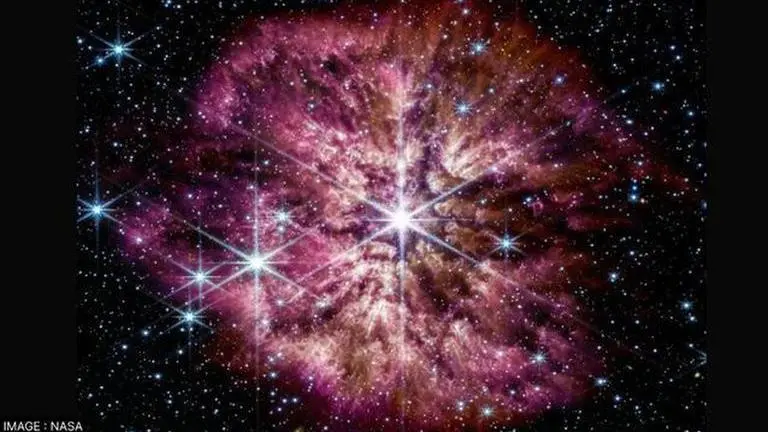Updated 15 March 2023 at 08:20 IST
NASA's James Webb telescope captures rare prelude to supernova in unprecedented detail
A Wolf-Rayet star was captured in great detail by NASA's James Webb Space Telescope last year. It has now been found that it is a rare prelude to supernova.
- Science News
- 2 min read

A glowing Wolf-Rayet star was captured in great detail by NASA's James Webb Space Telescope last year. But upon deeper analysis, it was found that the star, named WR 124, is a rare prelude to the final stage of a star's life - a supernova. According to NASA's official website, the star lies some 15,000 light-years away from the Sagittarius constellation.
The discovery of the massive star is crucial for astronomers, as it helps in deeply understanding the rare phase preceding the final supernova stage. At this point, stars like Wolf-Rayet are in the midst of letting go of their outer layers, which will result in the emission of clouds of gas and dust.
Once the gas released from the star moves away from it, cosmic dust is created. The dust is then detected by telescopes like Webb through infrared light. The cosmic dust is intriguing to astronomers, particularly for its origin. Dust plays a major role in the functioning of the universe, from creating stars, to clumping together and creating planets.
Why is WR 124 important to astronomers?
NASA's Webb telescope is an instrument that can open a range of possibilities for exploring cosmic dust through infrared wavelengths of light. Before the telescope came into the picture, it was nearly impossible for scientists to gather detailed data on the production of dust in environments like WR 124 and determine if the dust particles were big enough to survive a star's final stage.
Advertisement
WR 124 is also vital for astronomers to unravel the mysteries of cosmic dust. "Similar dying stars first seeded the young universe with heavy elements forged in their cores – elements that are now common in the current era, including on Earth. Webb’s detailed image of WR 124 preserves forever a brief, turbulent time of transformation, and promises future discoveries," NASA wrote.
Published By : Deeksha Sharma
Published On: 15 March 2023 at 08:20 IST
